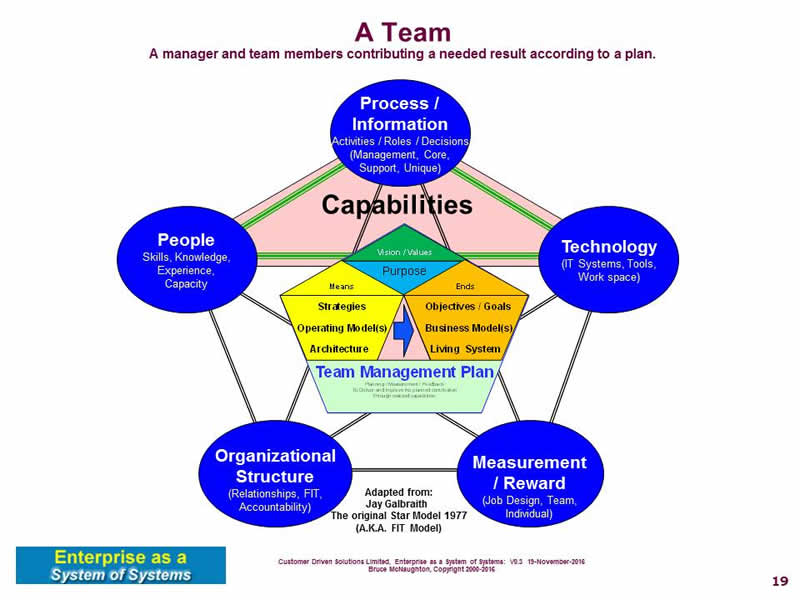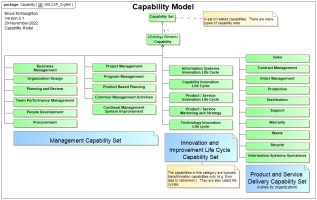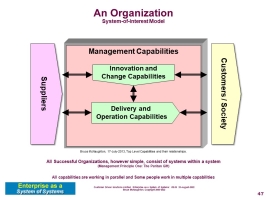System Element: Capabilities
There are various definitions of capabilities:
- ISO 9000:2015: ability of an object to realize an output that will fulfil the requirements for that output
- TOGAF 9.1: An ability that an organization, person, or system possesses. Capabilities are typically expressed in general and high-level terms and typically require a combination of organization, people, processes, and technology to achieve.
- DoDAF 2.0: The ability to achieve a Desired Effect under specified (performance) standards and conditions through combinations of ways and means (activities and resources) to perform a set of activities.
Capabilities are an essential part of an Organization. An Organization realizes a set of capabilities to achieve their objectives. The organization / team model highlights the position of the capabilities in the Team Model. The plan for the team ensures that the elements of all of the capabilities are planned and available at the appropriate capacity to achieve the objectives / goals in the plan.

Capabilities form one of the dimensions of the 3D Operating Model. Capabilities are also an integral part of the approach to realizing an Integrated Management System.
Capabilities can be grouped into the following related sets of Capabilities:
- Typical types of capabilities:
Management Capabilities.
Innovation and Change Capabilities.
Delivery and Operation Capabilities.
- Capability Sets for specific purposes:
- Identified set of capabilities in the plan for an organization or a team.
- Unique capabilities for a specific type of team.
- Compliance with external standards (ISO 9001, CMMI, etc)
- Related capabilities (Planning, Asset Management, etc).
Capability sets are generally documented in a Capability Model for a set of capabilities.
The following is an example of the typical sets of capabilities that are found in an organization as shown in the following Capability Model:
Capabilities are allocated to teams or organizations to realize their abilities to meet their objectives.. A capability can be replicated throughout the organization since the underlying process is consistent across any realization of a capability even through the people and tools may be unique.
Typically the capabilities in the value chain are simplified to the following model:
The following principles apply to a team capability:
- An Organization or a Team realizes a set of capabilities to achieve their objectives.
- Capabilities can be replicated in many organizations.
- An organization establishes and realizes the capabilities through their plans
- A Capability Innovation Team manages the life cycle of a capability and supports practitioners.
- All capabilities identified in a capability model directly or indirectly support the purpose / mission of the enterprise / organization.
- Michael Porter's Value Chain is a good example of the capabilities found in a capability model.
- Capabilities can be outsourced.
- Capabilities can be described as 'what' (e.g. the result of the interaction of people, process / information and technology). The People, Process and Information and technology are the how the capability is created.
The Value Chain from Michael Porter is a well known capability set for an organization.
Capability Sets can also be found in the following types of systems:
-
Asset Management System.

